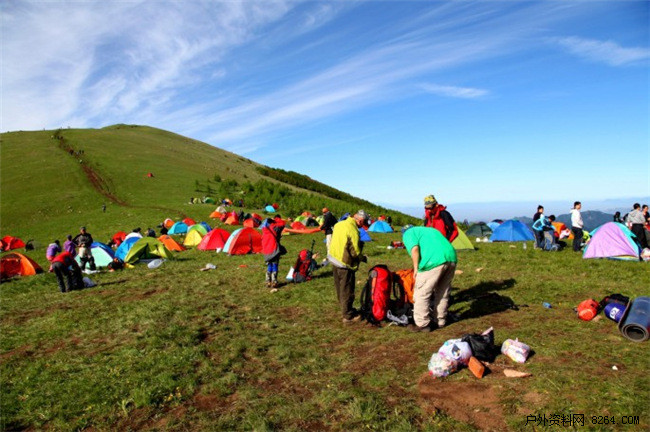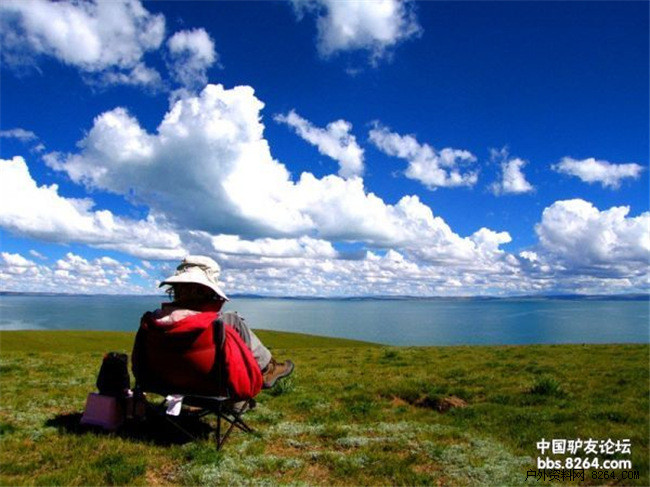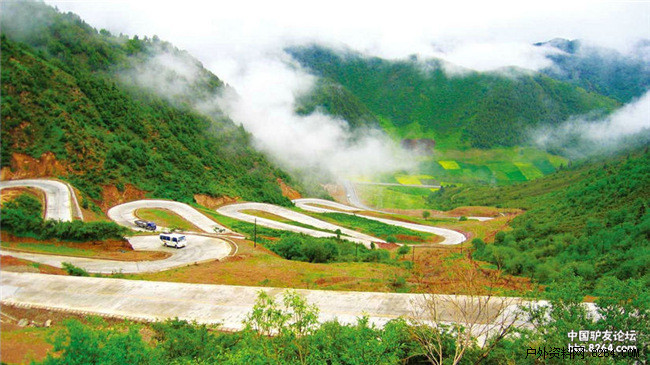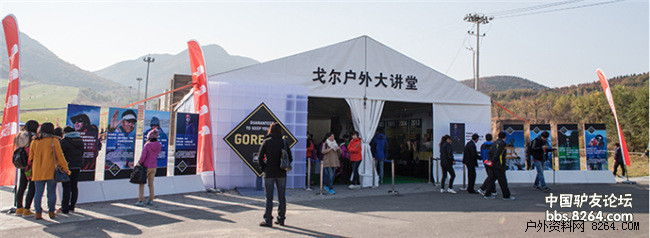Pioneer Mentor: Current Rubber
Over the years, with the continuous increase of outdoor sports groups, outdoor activities have become more and more colorful. At the beginning, although we have always hoped, emphasized, and advocated outdoor activities, people involved in outdoor activities can be environmentally friendly and caring for nature. However, many times we do not have a clear guideline, including our own. Many times outdoor environmental awareness is merely stuck to some simple common sense in the outdoors. For example, we don’t waste litter and do not ignite fire in the initial stage. The outdoor cafe, how to be an outdoor environmental operator, guide, is the content of our class.
The generation of garbage:
Outdoor waste is mainly from camps. Whether it is intermittent camps or camping camps, it will produce a lot of garbage over time.
The specific types include packaging waste, kitchen waste, and discharge waste. These wastes are classified into non-degradable waste and degradable waste. Some of them are harmful wastes, and many of them are recyclable.
one. About the classification of garbage:
Outdoor waste can generally be divided into four categories: recyclables, kitchen waste, hazardous waste, and other waste. At present, the commonly used waste disposal methods include comprehensive utilization, sanitary landfill, incineration and composting.
A. Recyclable waste includes paper, metal, plastic, glass, etc. Recycling through comprehensive treatment can reduce pollution and save resources. For example, if one ton of waste paper is recovered, 850 kilograms of paper can be made, 300 kilograms of timber can be saved, 74% more than equal production, and 0.7 tons of secondary raw materials can be obtained for each ton of plastic beverage bottles recovered; Steel can smelt 0.9 tons of steel, which saves 47% of the cost compared to using ore smelting, reduces air pollution by 75%, and reduces 97% of water pollution and solid waste.
B. Kitchen garbage includes food wastes such as leftovers, bones, and vegetable roots and leaves. After composting is conducted on-site by biotechnology, 0.3 tons of organic fertilizer can be produced per ton.
C. Hazardous waste includes waste batteries, waste fluorescent tubes, silver thermometers for waste water, and expired medicines. These wastes need special safe handling.
D. Other wastes include those that are difficult to recycle, such as feminine hygiene products and other sanitary products, in addition to the above-mentioned types of garbage. Sanitary landfills can effectively reduce the pollution of groundwater, surface water, soil, and air.
two. For garbage disposal, classification is the key:
It can be roughly divided into two categories: decomposable material garbage and non-decomposable material garbage
1. Decomposable material waste (for example, our excrement, leftover food also includes some paper packaging tapes, etc.) This type of waste can usually be buried, and it can be turned into organic in the soil after decay. It can promote the growth of surrounding plants. But note that when burying it, it should not be buried together with the plastic bag that holds the garbage. Although the bag can be accelerated to decay, it will cause damage to the local soil due to the indecomposability of polyethylene. If possible, it can be buried in paper bags. Take the plastic bag back and do another treatment.
2. The other is garbage that can not be decomposed (eg plastic bags, bottles filled with beverages and water, plastic lunch boxes, etc.) The disposal of such waste cannot usually be buried or simply burned. Because doing so will cause discoloration pollution, secondary pollution. For this kind of garbage, we use waste to treasure. We can extend their life cycle. Try to use it as many times as you can with hygienic conditions. Do not lose it once. To leave bottles and cans for the locals, one can use them again. Second, they can take out and buy money. Deal with garbage, turn waste into treasure, kill more. The last remaining trash is relatively lightweight, so you can bring it to a nearby village or wait for further processing on the road.
three. Outdoor waste disposal and environmental protection guidelines:
After we have clarified the classification of garbage and garbage, what should we do in the open air?
1, garbage disposal
a. The parts of the garbage that are difficult to degrade naturally (such as batteries, plastics, metals, glass, chemicals, coated or coated paper products, etc.) should not be incinerated or buried. They should be brought out of mountain forests and discarded into classified bins.
b. Waste that can be naturally degraded (such as paper, pure cotton products, and food waste) can be crushed and disposed of in situ, but cannot be disposed of in the water or near the water stream.
2. Camp environment and living hygiene
The protection of the environment around the camp mainly refers to the protection of the water around the camp, the treatment of urine and feces, the treatment of feminine hygiene products, and the safety of cooking places;
a. Protect the water in the camp area. Scrubbing must be done on the shore of the water. Do not proceed directly in the water stream. Use water in a container to carry water away from the water source two meters away, to prevent pollution of the lake or downstream of the river.
b. In the wild, do not use soap, toothpaste, detergent and other chemicals, and instead use dry, wet paper towels; in particular, can not be used in water products.
c. When going to the toilet in nature, keep away from water for 30 meters. In the underground breeze, it is best to bury it in a convenient place to prevent the smell from emitting pollution. Go to the toilet to keep away from water, roads, and animals.
d. Wastewater, liquid waste, and food residues should be dumped and dumped. They should be evacuated and bury and rehabilitated. Do not splash around in the camp area.
e. Relaxation sites should be focused on digging pits and setting up shelters, leaving camps more than 50 meters away. Digging pits should be neatly piled on the side of the pit. After each use, a layer of soil shall be covered and buried and buried. If possible, plants should be planted on the pits at the end of the day to mark them and help to expedite the decomposition of the objects.
f. The dry garbage used for daily use should be marked with flammable and non-combustible bags. The flammable and non-combustible shall be separately collected and bagged. After the evacuation, the inflammables shall be buried (after the non-fire season in mountain areas) and buried, and the incombustibles shall be taken to the upper and lower garbage stations. If it is a mountain ban period, both kinds of garbage are brought back.
3, field fire prevention
a. Minimize the use of fire in the wild. If fire is required, fire safety should be taken care of to ensure that the fire is completely extinguished before leaving.
b. Smoking is prohibited during the journey.
c. Use a small gas stove suitable for field use to take the fire.
d. Use fire to comply with the relevant laws and regulations of the country.
4, protect the plant
a. Not picking and digging wild plants.
b. We do not intentionally destroy wild plants. When we need to open roads in the wild, we must pay attention to the trunks of trees and rattan.
c. Protecting the vegetation on the top of the mountain is very fragile, and it is very difficult to recover after destruction. Do not say that the tree is grass, it is difficult to recover naturally after being trampled. Because the soil on the top of the hill is mostly thin, the rocks are bare and the water is scarce.
5, protect animals
a. Do not intentionally disturb, hunt down wild animals, and do not buy or eat wild animals that are prohibited by the state.
b. Do not smoke or wild animals near the animal's nest to avoid odors or disturbing objects.
four. Suggestions for head donkeys and team members in outdoor activities:
1. For multiple team gathering activities, the organizer must coordinate with the team leader. Each team clearly appoints one or more environmental protection supervisors to take charge of the environmental supervision work of the whole event; the activity is over and the environmental protection supervisor is responsible for summarizing the whole activity. In the process of environmental issues, be amiable when dealing with issues so as to avoid an quarrel.
2. Before each event, in addition to the players’ mutual introduction and understanding, the team leader is also obliged to repeat the outdoor environmental guidelines to each team member and try to make everyone know how to do it.
3. Develop a habit before leaving the team. Environmental protection should begin with the purchase of materials for each activity. Minimize the amount of non-degradable waste to the field. Unnecessary packaging of some materials should be handled as far as possible in the urban area to reduce material supply. The weight, secondly, also reduces the pressure of waste disposal in the wild;
4. At the beginning of the campaign, you should do a good job of sorting garbage. For example, you can prepare garbage sorting bags. For example, red bags can be disassembled (preferably paper bags), blue bags can't be decomposed, and players can use different garbage at any time during the entire activity. When sorting into bags, it is best for everyone to strengthen their consciousness and throw them when they are thrown away. It is impossible to do this, but it can also be co-ordinated and dealt with separately. It can avoid littering in activities and collect garbage when the activity ends.
5. Rubbish in action should be carried with you, and if necessary, clean up other garbage in the camp.
Environmental travel is the most basic ethical standard for lovers of outdoor sports. Protecting the ecological balance of nature is also the responsibility of everyone. There is a saying that is very good: "Don't take anything except the photo, leave nothing except the footprints." Therefore, being a traveler should be an environmentalist first.
Over the years, with the continuous increase of outdoor sports groups, outdoor activities have become more and more colorful. At the beginning, although we have always hoped, emphasized, and advocated outdoor activities, people involved in outdoor activities can be environmentally friendly and caring for nature. However, many times we do not have a clear guideline, including our own. Many times outdoor environmental awareness is merely stuck to some simple common sense in the outdoors. For example, we don’t waste litter and do not ignite fire in the initial stage. The outdoor cafe, how to be an outdoor environmental operator, guide, is the content of our class.
The generation of garbage:
Outdoor waste is mainly from camps. Whether it is intermittent camps or camping camps, it will produce a lot of garbage over time.


The specific types include packaging waste, kitchen waste, and discharge waste. These wastes are classified into non-degradable waste and degradable waste. Some of them are harmful wastes, and many of them are recyclable.
one. About the classification of garbage:
Outdoor waste can generally be divided into four categories: recyclables, kitchen waste, hazardous waste, and other waste. At present, the commonly used waste disposal methods include comprehensive utilization, sanitary landfill, incineration and composting.
A. Recyclable waste includes paper, metal, plastic, glass, etc. Recycling through comprehensive treatment can reduce pollution and save resources. For example, if one ton of waste paper is recovered, 850 kilograms of paper can be made, 300 kilograms of timber can be saved, 74% more than equal production, and 0.7 tons of secondary raw materials can be obtained for each ton of plastic beverage bottles recovered; Steel can smelt 0.9 tons of steel, which saves 47% of the cost compared to using ore smelting, reduces air pollution by 75%, and reduces 97% of water pollution and solid waste.
B. Kitchen garbage includes food wastes such as leftovers, bones, and vegetable roots and leaves. After composting is conducted on-site by biotechnology, 0.3 tons of organic fertilizer can be produced per ton.
C. Hazardous waste includes waste batteries, waste fluorescent tubes, silver thermometers for waste water, and expired medicines. These wastes need special safe handling.
D. Other wastes include those that are difficult to recycle, such as feminine hygiene products and other sanitary products, in addition to the above-mentioned types of garbage. Sanitary landfills can effectively reduce the pollution of groundwater, surface water, soil, and air.
two. For garbage disposal, classification is the key:
It can be roughly divided into two categories: decomposable material garbage and non-decomposable material garbage
1. Decomposable material waste (for example, our excrement, leftover food also includes some paper packaging tapes, etc.) This type of waste can usually be buried, and it can be turned into organic in the soil after decay. It can promote the growth of surrounding plants. But note that when burying it, it should not be buried together with the plastic bag that holds the garbage. Although the bag can be accelerated to decay, it will cause damage to the local soil due to the indecomposability of polyethylene. If possible, it can be buried in paper bags. Take the plastic bag back and do another treatment.
2. The other is garbage that can not be decomposed (eg plastic bags, bottles filled with beverages and water, plastic lunch boxes, etc.) The disposal of such waste cannot usually be buried or simply burned. Because doing so will cause discoloration pollution, secondary pollution. For this kind of garbage, we use waste to treasure. We can extend their life cycle. Try to use it as many times as you can with hygienic conditions. Do not lose it once. To leave bottles and cans for the locals, one can use them again. Second, they can take out and buy money. Deal with garbage, turn waste into treasure, kill more. The last remaining trash is relatively lightweight, so you can bring it to a nearby village or wait for further processing on the road.
three. Outdoor waste disposal and environmental protection guidelines:
After we have clarified the classification of garbage and garbage, what should we do in the open air?
1, garbage disposal
a. The parts of the garbage that are difficult to degrade naturally (such as batteries, plastics, metals, glass, chemicals, coated or coated paper products, etc.) should not be incinerated or buried. They should be brought out of mountain forests and discarded into classified bins.
b. Waste that can be naturally degraded (such as paper, pure cotton products, and food waste) can be crushed and disposed of in situ, but cannot be disposed of in the water or near the water stream.
2. Camp environment and living hygiene
The protection of the environment around the camp mainly refers to the protection of the water around the camp, the treatment of urine and feces, the treatment of feminine hygiene products, and the safety of cooking places;
a. Protect the water in the camp area. Scrubbing must be done on the shore of the water. Do not proceed directly in the water stream. Use water in a container to carry water away from the water source two meters away, to prevent pollution of the lake or downstream of the river.
b. In the wild, do not use soap, toothpaste, detergent and other chemicals, and instead use dry, wet paper towels; in particular, can not be used in water products.
c. When going to the toilet in nature, keep away from water for 30 meters. In the underground breeze, it is best to bury it in a convenient place to prevent the smell from emitting pollution. Go to the toilet to keep away from water, roads, and animals.
d. Wastewater, liquid waste, and food residues should be dumped and dumped. They should be evacuated and bury and rehabilitated. Do not splash around in the camp area.
e. Relaxation sites should be focused on digging pits and setting up shelters, leaving camps more than 50 meters away. Digging pits should be neatly piled on the side of the pit. After each use, a layer of soil shall be covered and buried and buried. If possible, plants should be planted on the pits at the end of the day to mark them and help to expedite the decomposition of the objects.
f. The dry garbage used for daily use should be marked with flammable and non-combustible bags. The flammable and non-combustible shall be separately collected and bagged. After the evacuation, the inflammables shall be buried (after the non-fire season in mountain areas) and buried, and the incombustibles shall be taken to the upper and lower garbage stations. If it is a mountain ban period, both kinds of garbage are brought back.
3, field fire prevention
a. Minimize the use of fire in the wild. If fire is required, fire safety should be taken care of to ensure that the fire is completely extinguished before leaving.
b. Smoking is prohibited during the journey.
c. Use a small gas stove suitable for field use to take the fire.
d. Use fire to comply with the relevant laws and regulations of the country.
4, protect the plant
a. Not picking and digging wild plants.
b. We do not intentionally destroy wild plants. When we need to open roads in the wild, we must pay attention to the trunks of trees and rattan.
c. Protecting the vegetation on the top of the mountain is very fragile, and it is very difficult to recover after destruction. Do not say that the tree is grass, it is difficult to recover naturally after being trampled. Because the soil on the top of the hill is mostly thin, the rocks are bare and the water is scarce.
5, protect animals
a. Do not intentionally disturb, hunt down wild animals, and do not buy or eat wild animals that are prohibited by the state.
b. Do not smoke or wild animals near the animal's nest to avoid odors or disturbing objects.

four. Suggestions for head donkeys and team members in outdoor activities:
1. For multiple team gathering activities, the organizer must coordinate with the team leader. Each team clearly appoints one or more environmental protection supervisors to take charge of the environmental supervision work of the whole event; the activity is over and the environmental protection supervisor is responsible for summarizing the whole activity. In the process of environmental issues, be amiable when dealing with issues so as to avoid an quarrel.
2. Before each event, in addition to the players’ mutual introduction and understanding, the team leader is also obliged to repeat the outdoor environmental guidelines to each team member and try to make everyone know how to do it.
3. Develop a habit before leaving the team. Environmental protection should begin with the purchase of materials for each activity. Minimize the amount of non-degradable waste to the field. Unnecessary packaging of some materials should be handled as far as possible in the urban area to reduce material supply. The weight, secondly, also reduces the pressure of waste disposal in the wild;
4. At the beginning of the campaign, you should do a good job of sorting garbage. For example, you can prepare garbage sorting bags. For example, red bags can be disassembled (preferably paper bags), blue bags can't be decomposed, and players can use different garbage at any time during the entire activity. When sorting into bags, it is best for everyone to strengthen their consciousness and throw them when they are thrown away. It is impossible to do this, but it can also be co-ordinated and dealt with separately. It can avoid littering in activities and collect garbage when the activity ends.
5. Rubbish in action should be carried with you, and if necessary, clean up other garbage in the camp.

Environmental travel is the most basic ethical standard for lovers of outdoor sports. Protecting the ecological balance of nature is also the responsibility of everyone. There is a saying that is very good: "Don't take anything except the photo, leave nothing except the footprints." Therefore, being a traveler should be an environmentalist first.

Mifia is a Chinese manufacturer of pvc Pencil Pouch with 15 years experience in stationery production, often with an innovative approach to making Mini Pouch Case Bag.
Pencil Pouch,Marker Holder Pouch Box,Stationery Organizers,Cosmetic Bag,Mini Pouch Case Bag
MIFIA INDUSTRIAL CO., LTD., , https://www.stationery-manufacturer.com